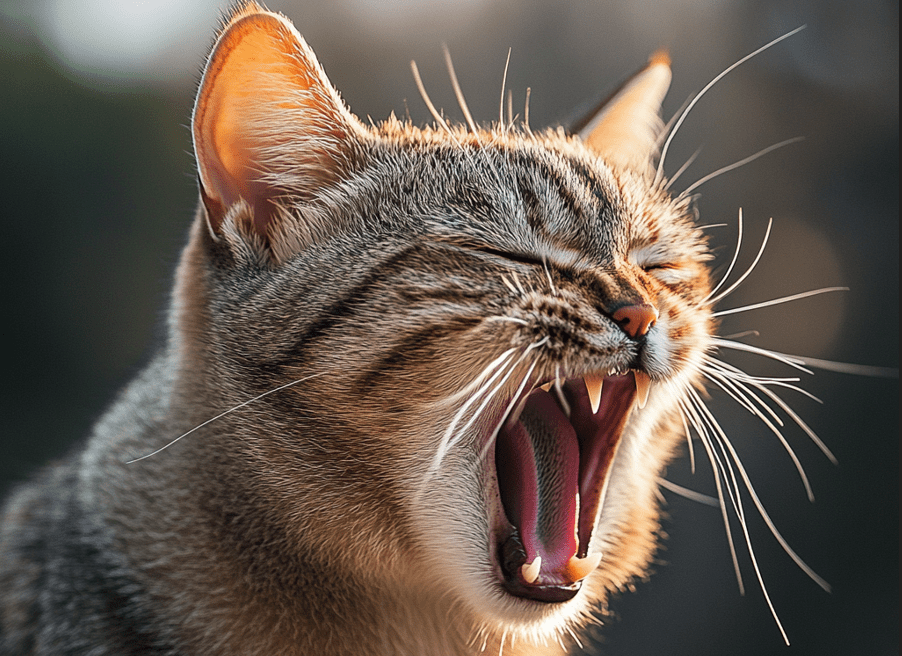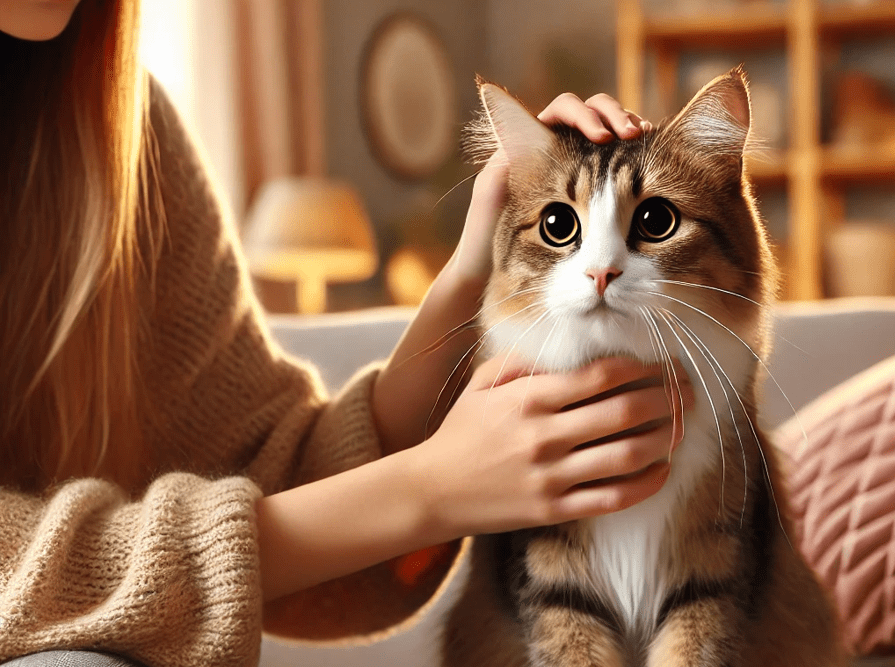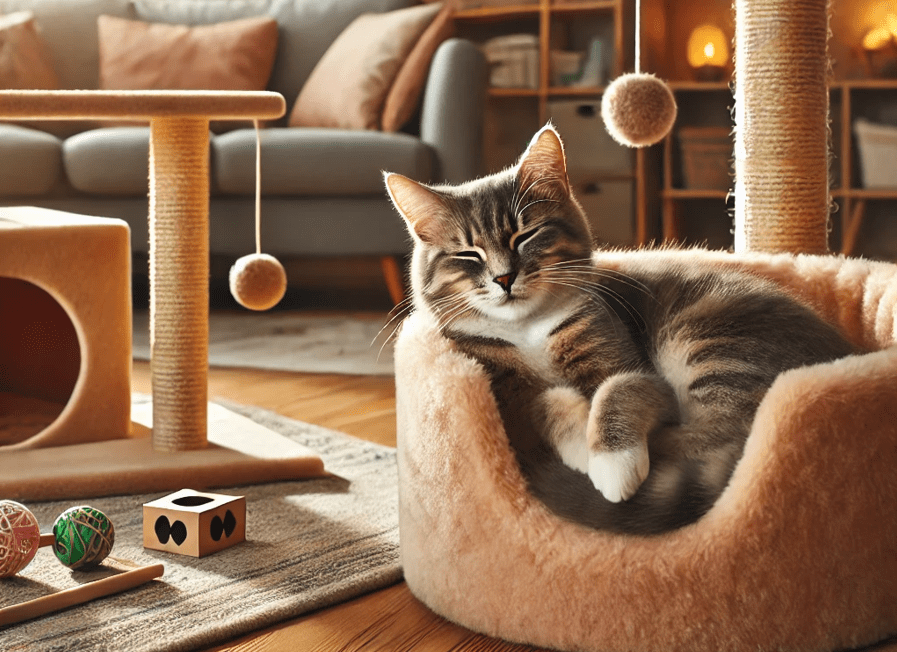
Does your cat engage in biting, scratching, stalking and pouncing in ways that feel less playful than predatory? Maybe your cat nips at you after petting for just a short while or when you pet certain areas of its body. This behavior may be worrying, but there are effective ways to handle this aggression in cats.
Preventing cat aggression is essential for creating a harmonious environment where both cats and their owners can thrive together. Before working on your cat’s aggressive behavior at home, it’s important to consult your veterinarian. However, many underlying health problems, such as pain or discomfort, can contribute to aggression in cats. Frequently aggression can be mitigated or eliminated by treating these medical conditions.
What Is Aggression in Cats?

Aggression in cats describes threatening or harmful behaviors. Their aggression can be toward other animals, directionless people, or even things. Some of the most common signs of aggression are hissing, growling, swatting, or, in more serious circumstances, biting and scratching. Every cat has its own personal brand of cat aggression, and it can often stem from a place of fear, anxiety or discomfort.
Aggression is usually a defensive response. Cats employ it for self-preservation or to restore control in scenarios they consider threatening or not comfortable. Identifying these behaviors and their triggers is the first step to assisting your cat in feeling more secure and relaxed.
Causes of Cat Aggression
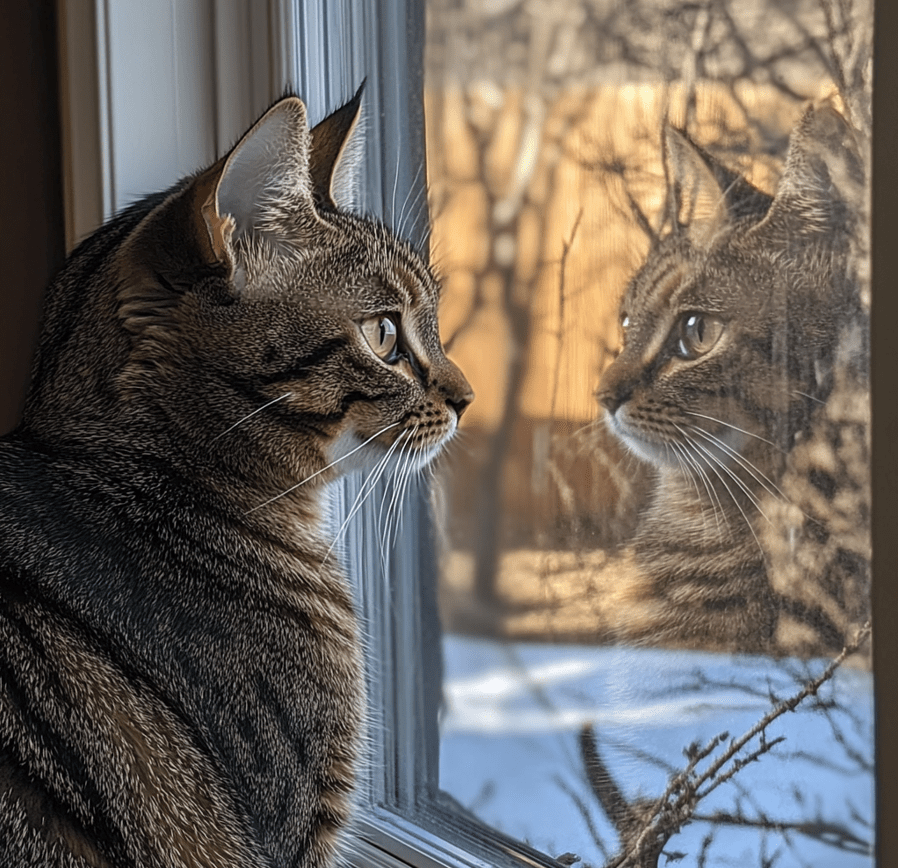
It can be hard being in the mind of our cat to understand why he or she might exhibit aggressive behavior since we can’t read their minds or take note of their emotions. Also, aggression is a complicated subject that experts still investigate. Several widespread causes of aggressiveness can be confirmed in cats, such as:
1.Fear
2.Play and excitement
3.Redirection
4.Dislike of petting
5.Pain and sensitivity
Let’s take a deep dive into each of these causes below.
Fear
Redirection happens when a cat is unable to take out its frustration on the source of the problem and takes it out on another person or animal instead. An example would be a cat noticing an animal outside that it can’t reach, it would turn its aggression to a person or pet nearby. Find and remove the trigger, and you can manage this type of behavior.
Play and Excitement
Some cats are incredibly sensitive about being touched in particular locations, including around their lower back or tail. That can create a very sensitive individual who is ready to experience an angry reaction even during a kind moment. Theories abound as to why cats display this behavior, but some cats can be trained to put up with brief episodes of petting. Always allow your cat to approach you when it wants to and respect its space to prevent eliciting aggression.
Pain and Sensitivity
Cats in pain or suffering from medical issues may also become aggressive. As with people who may react defensively when in pain, cats may strike out in self-defense against that which is either painful, or will be painful if not avoided. If you think your cat may be in pain, visit a vet to rule out any potential health issues.
Knowing the reasons why can help you tackle aggression as a cat owner and develop a more peaceful space for your pampered pet.
How to Keep You and Your Cat Safe
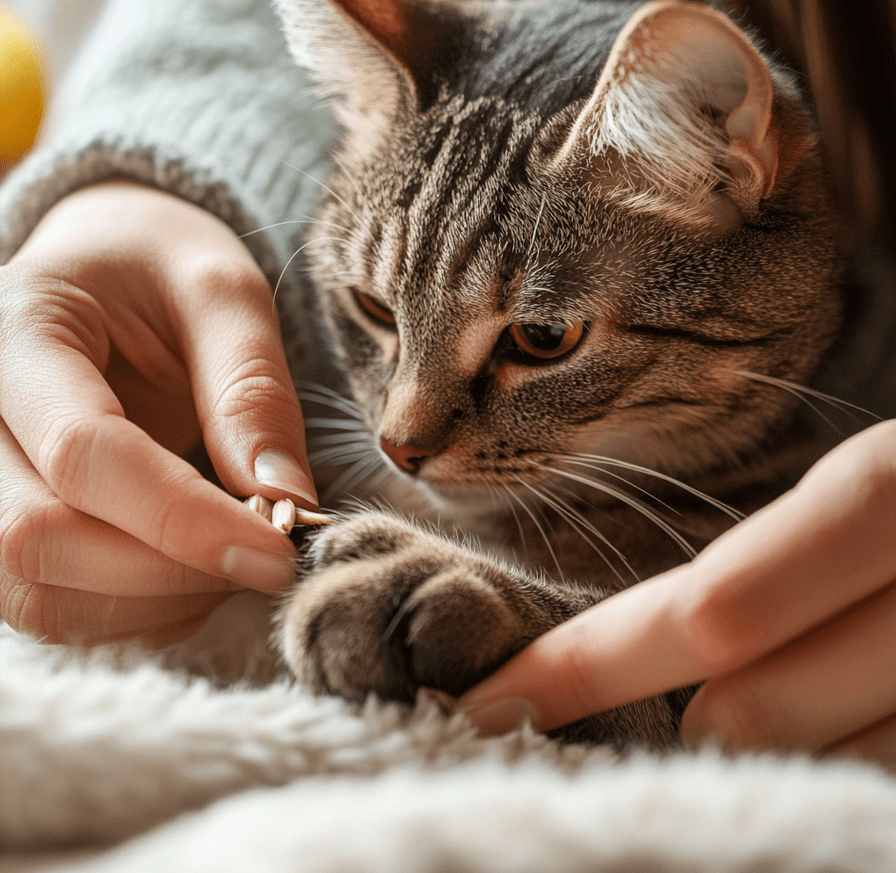
The first thing you want to do to protect yourself and your cat is to reduce the risk of damage. For example, proactively trimming your cat’s nails on a regular basis can mitigate the amount of damage inflicted by scratching.
The following step that is crucial is figuring out what stimuli your cat’s aggressiveness. Pay attention to the circumstances that trigger aggression, such as the time of day, other animal or human activity, any activity involving your cat, or unusual sounds or smells. Once you have identified these triggers, avoid them whenever it is feasible until the underlying behavioral issues are addressed.
Most cats will show warning signs before acting aggressively, but the signs can look different from one cat to the next. Watch your cat’s body language carefully for signs that it is going in for a predatory strike. Signs include dilated pupils, changes in the position of the ears, a tail that is swishing rapidly or, in some cases, an overall tense and crouched posture. When you learn to recognize these signals, you can prior to aggression, avoiding escalation and the risk of injury.
Improve Your Cat’s Environment: How and Why
Enriching your cat’s environment can certainly help with better behavior and better well-being. It combats boredom and frustration, makes the brain work, and is a healthy way to play and burn off energy.
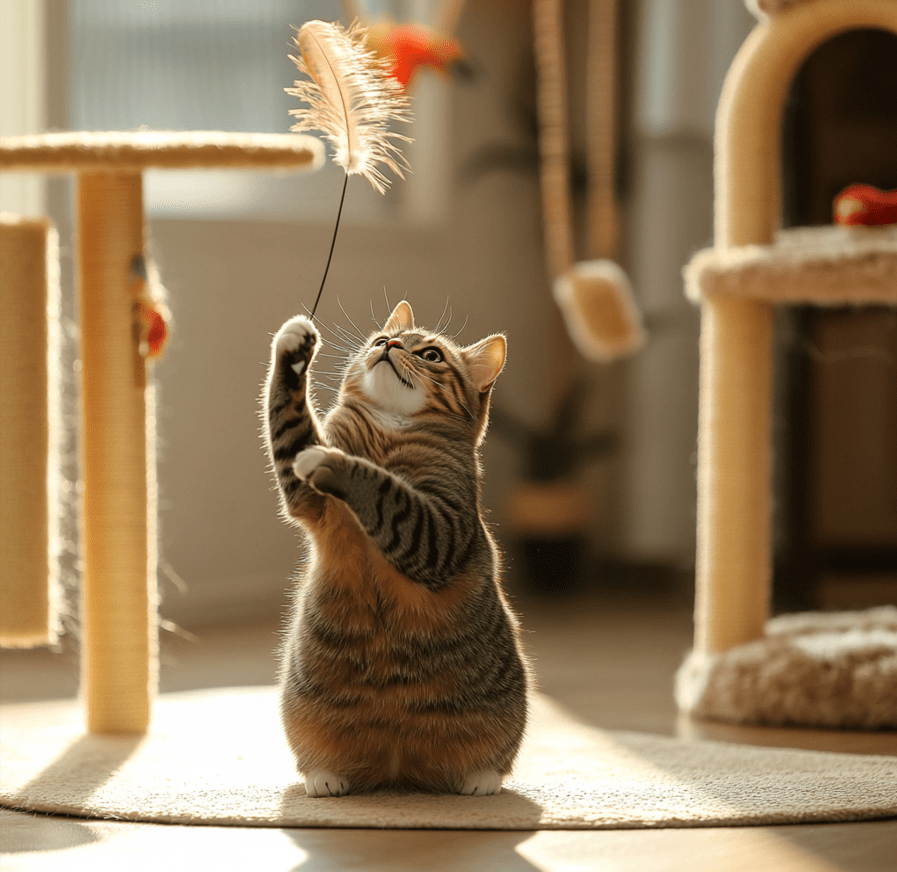
A lot of undesirable behaviors can be prevented by providing your cat with plenty of enrichment. However, it’s important to pick activities that match your cat’s likes (and dislikes!) and shun anything that may overstimulate or frighten them.
Ideas for Cat Enrichment
Some concrete ways to make your cat’s life more stimulating:
Create a Toy Rotation System:
You can assemble a collection of toys, but when not playing, keep them out of your cat’s reach. Cats are hard-wired for novelty and movement, so changing out their toys every few days will keep them engaged. Rotate in new toys every so often to keep things fresh.
Enrich Toys with Smells:
Soften the familiar smell of familiar notes. Bring along small toys that you can use to carry your scent with you, or to leave them outside to absorb natural scents. Catnip-filled toys can also be a winner with many cats. Also have decision on something like the food-dispensing toys that offer mental stimulation and keep your pet entertained.
Play with Interactive Toys:
Toys that you have to work with together with your cat, like feather wands or string toys, will usually keep a cat engaged. For very active cats, try to give them at least two play sessions of 20 minutes or longer every day. Do not use your hands or body as playthings, as this encourages aggressive behavior by teaching your cat that biting or scratching is acceptable.
Utilizing these strategies can help you provide a less dangerous, more enriching environment for your cat while bringing you closer together with your pet.
Ways to Avoid Aggression in Cats
One way to reduce feline aggression is by modifying the environment and not exposing your cat to anything or anyone that provokes aggressive behavior. This method is appropriate if you are able to protect yourself and your cat does not seem psychologically distressed. If this management approach works, those additional steps won’t be needed.

But if the aggression continues, increases in frequency or if your cat is dealing with unavoidable triggers or chronic anxiety, it is better to seek professional help. Veterinarians who prescribe for cats and certified feline behavior consultants can provide tailored guidance for your cat and maintain safety for everyone involved.
In the meantime, you can use very basic behavior modification methods, including:
Promoting incompatible behaviors:
For example, redirecting your cat to a scratching post makes them less likely to scratch your furniture or you.
Incentivizing good behaviors:
Offer treats or commendation to reinforce calmness and positives.
Redirecting your attention:
Use distractions to bring a cat back to mindfulness before acting out, like crinkling a treat bag or cracking open a can.
Linking triggers to positive outcomes:
Pair triggered unavoidable situations (e.g., loud appliances) with a reward (like a favorite treat) to reduce fear.
Other options include using pheromone products (such as Feliway), calming collars or nutritional supplements (such as Nutri-Calm, Zylkene, Solliquin) as recommended by your veterinarian. In some instances, dietary changes or prescription medications can also offer help.
Practices to Avoid
There are specific approaches that must not be utilized for resolving cat aggression that could in fact cause the problem to escalate even further. Don’t do the following, and look for other advice if an expert recommends them:
Do not punish:
Even light punishment for your cat can worsen aggression and damage your relationship. Certain actions can hasten this process, such as spraying water, creating loud noises, or isolating your cat for long periods of time.
Respect your cat’s boundaries:
Asking your cat to do more than they are comfortable with will cause a regression in their progress.
Lastly, try to put yourself in your cat’s shoes and think about how they feel. Giving your cat time and being there for him are important to helping him feel safe. Most are well versed in identifying factors that promote and alleviate feline aggression so you are not the first person they help with this concern. When done correctly, you will ensure that both you and your cat can cohabitate in a safer and calmer space.

